A technicolour visit to Morocco's holiest town
 Alicia Erickson
Alicia EricksonClosed for centuries to outsiders, Moulay Idriss is a sacred place bathed in colour and tradition – and it makes a welcome respite from the crowds of Chefchaouen.
On a May morning in Moulay Idriss – a small town at the base of Jebel (Mount) Zerhoune in Morocco's Rif Mountains – I rise at dawn with the crow of roosters to beat the summer heat. Wandering towards the olive-tree covered hillside, I wind through a labyrinth of centuries-old cement buildings, where the walls are splashed in shades of mint, coral, lemon, violet and emerald.
The spectrum of pastel hues rivals the vibrant blues of heavily-touristed Chefchaouen, a three-hour drive north. Yet, historically closed to non-Muslims and lacking a direct train line, Moulay Idriss has remained largely off the tourist radar. Nevertheless, this technicolour town's ties to Idris I – the founder of Morocco's first Islamic dynasty – has made it the country's holiest pilgrimage site. "If you visit Moulay Idriss five times, it's considered the same as if you visit Mecca in Saudi Arabia," says Imad El-Meloudi, my tour guide.
Despite its brilliant colours and sacred status, life here is slow paced and steeped in tradition. The city opened to non-Muslims in 1912, and planned improvements to Morocco's high-speed rail system will soon make it easier to visit, as the nearby city of Meknes is a new stop on the link. "We are waiting for more visitors," says El-Meloudi. "We want to get the word out about one of Morocco's most important towns."
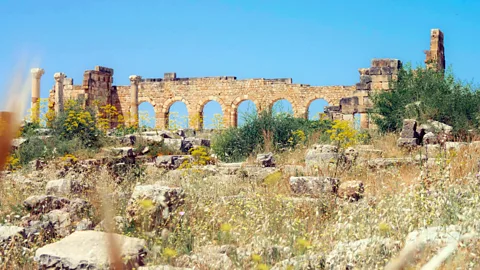 Alicia Erickson
Alicia EricksonA refuge among the ruins
Feeling a failed uprising in 786 BCE, Idris I – the great-grandson of the Prophet Muhammed – made the Amazigh-Roman ruins of Volubilis his headquarters for his quest to spread Islam. Upon his death by poisoning in 791, he was buried several kilometres away, and devout Muslims began building homes around his grave during the 17th Century, giving rise to the modern town.
Today, remnants of columns, homes, public baths and detailed mosaics of Volubilis are spread among fields of yellow flowers overlooking olive groves and vineyards. "There were once two rivers that ran through here," says Khalid, who guides me through the ruins. "The first inhabitants settled here for the fertile land. They had everything they needed."
 Alicia Erickson
Alicia EricksonThe nucleus of a holy city
As Moulay Idriss developed, it quickly became Morocco's most important religious town. To protect its sanctity, it was closed to non-Muslims until 1912. Only in 2005 were non-Muslims allowed to stay overnight; a change decreed by King Mohammed VI hoping to bridge divides between Western cultures and Morocco while making Moulay Idriss better known to the outside world.
Some of the town's most sacred elements are still preserved just for followers of Islam, such as access to Idris I's tomb and the mosque. Through an arched pathway from the town's main square, you can glimpse the shiny white floor extending into the mosque and the mausoleum, blocked by a single horizontal pole. Only Muslims may proceed further.
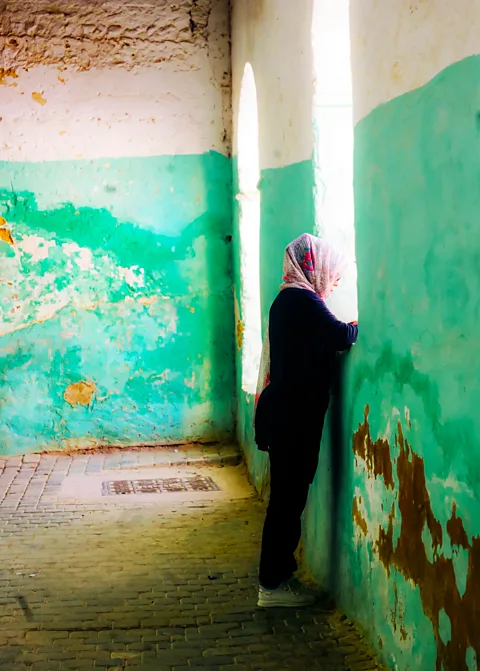 Alicia Erickson
Alicia EricksonThe call to prayer
Hajiba Dahik – one of my hosts at the local guesthouse where I'm staying – leads me through a series of winding paths to a discreet passage overlooking the mosque. The call to prayer echoes through the narrow corridors. From the arched windows, we observe a handful of worshippers walking to the mosque to pray.
"During Ramadan, these halls are filled with people," she says, while looking down into the mosque from the pale green-and-white stone corridor. "And during August, there is a festival honouring Moulay Idriss that draws Muslims from across Morocco. People are sleeping on the floor, listening to music."
 Alicia Erickson
Alicia EricksonA very distinguished minaret
"La Grande Terrace, madame? Le minaret? Cinq minutes!" two boys on a street corner enthusiastically point me up a hill.
The Best of 2025
Morocco's Rif Mountains were named one of BBC Travel's 25 best places to visit in 2025, a list highlighting destinations that are not only welcoming visitors, but using tourism as a force for good. See the full list here.
From the bottom of the incline, I spot the emerald-green, round minaret with white Kufic-scripted Quranic verses of the Al-Santisi Mosque. The colours green and white are strongly tied to the Islamic religion – green represents Paradise and white symbolises purity – and the cylindrical minaret is purportedly the only of its kind in Morocco, where minarets are square-shaped, a design consistent across North Africa and the Iberian peninsula. Architect Hajj Idris Al-Santisi constructed the round minaret in 1939 to distinguish Moulay Idriss from other mosques in the country.
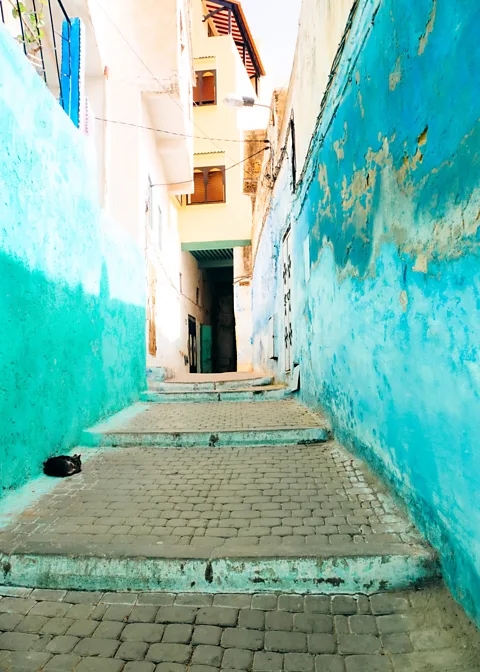 Alicia Erickson
Alicia EricksonA watercolour tribute to Islam
Above the main square, the homes and small shops of Moulay Idriss are built into rocky hills, connected by a maze of narrow alleys and tunnels leading up and around the hills, where the white facades transform into technicoloured paths. Each corner and flight of steps reveals a new hue: seafoam green, sky blue, butter yellow, dusty rose, transporting you into a watercolour painting.
There are different stories about the origins of the colourful streets. Some residents I met surmise that the buildings have been green and white since the town was built. Others note that the homes here used to be white and, slowly, everyone started bathing them in colour. "The colours are [the] people's choice," says El-Meloudi. "They don't need to be blue like Chefchaouen, they paint their homes whatever colour they want."
Everyone seems to agree on one thing: the dominance of white and green in Moulay Idriss is a tribute to Islam, representing peace and the spiritual importance of the town.
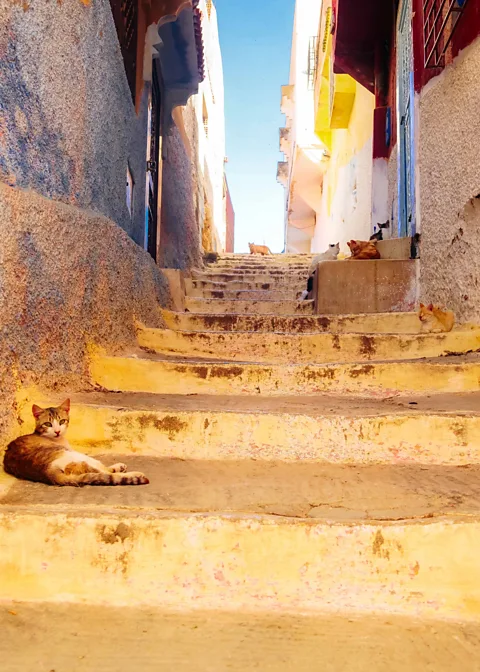 Alicia Erickson
Alicia EricksonRevered creatures
"Do you wonder why you always see cats in the streets of Morocco?" asks Madiha Alfi, a guide based in the nearby city of Meknes. "In Islam, cats are highly regarded. They are considered to be pure and ritually clean. Prophet Muhammad reportedly was known to be gentle and caring towards them, setting an example for Muslims."
More like this:
• Morocco's new cross-country cycling route
Indeed, exploring Moulay Idriss's colour-splashed alleys, you might spot more felines than people. Orange-and-white cats stretched out on yellow steps. Kittens playing in a blue corridor. A black cat licking its paws in the shadow of a mint-green door.
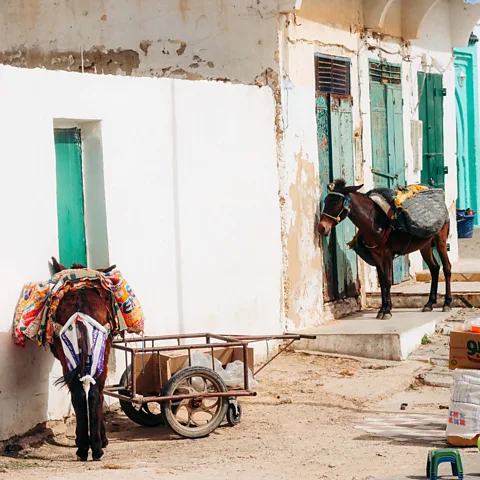 Alicia Erickson
Alicia EricksonReminders of a traditional way of life
Donkeys are a reminder of the traditional ways of life still dominant in Moulay Idriss. Unlike many of Morocco's more-visited destinations like Fes and Marrakech, donkeys are not used to carry tourists but are a primary form of transportation among local residents.
"The donkeys are used for everything," says El-Meloudi. "They help with olive harvest. They help elderly locals carry groceries home up the mountain."
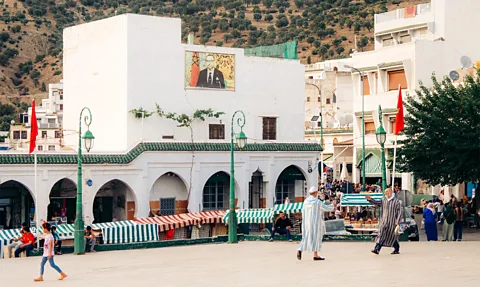 Alicia Erickson
Alicia EricksonModern life in an ancient town
Much of life in Moulay Idriss exists in the rocky hills above the town and among the winding, colourful streets. By evening, however, the town descends into the main square. Tables are filled with locals sipping coffee and mint tea beneath the shade of purple flowering jacaranda trees. Young children kick footballs. Women sit on plastic red chairs, painting henna designs on one another's feet and hands. Men dressed in striped djellaba (a long, traditional Moroccan robe) walk across the square.
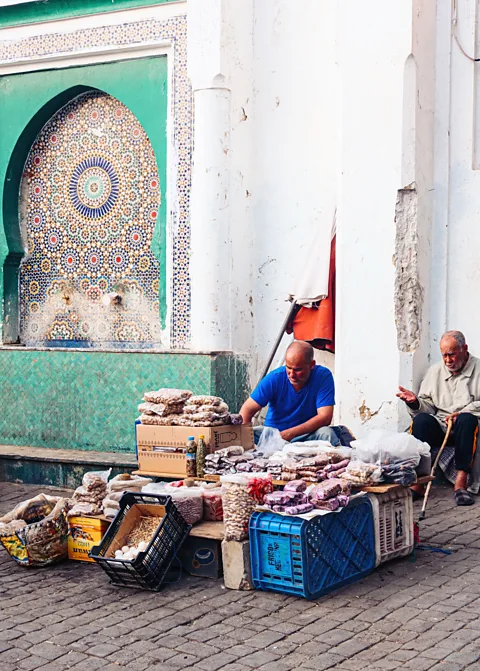 Alicia Erickson
Alicia EricksonSeasonal bounty
Around the corner from the main square, vendors sell quick bites and fresh goods. Baskets are filled with seasonal bounties: peaches, mulberries, plums and leafy green herbs. Street food is plentiful. Men grill kefta (a kebab made from ground beef or lamb and mixed with spices and herbs) and fresh ears of corn over fire.
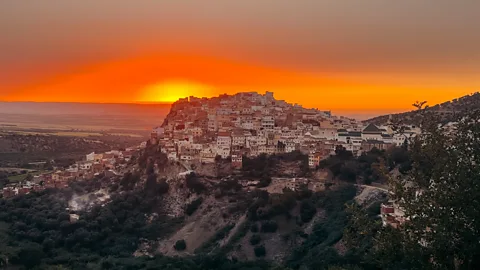 Alicia Erickson
Alicia EricksonThe view from above
Once the afternoon heat subsides, I hike out of town for sunset. I walk past Roman baths and cross a bubbling river, bypassing herds of sheep grazing in fields of brilliant pink flowers. Taking a seat on the rocky ground beneath the branches of an olive tree, I marvel at the colourful buildings of Moulay Idriss spread across two rugged hills, enveloped by open fields. Intense shades of orange and red spill across the sky casting it in a golden light.
 Alicia Erickson
Alicia EricksonIn a world where so much of travel is curated, Moulay Idriss is a rare invitation into the unfiltered everyday. "If you knock on someone's door, they'll invite you in for tea," El-Meloudi had told me earlier in the day. The heart of Morocco's spiritual history invites visitors to embrace the art of slow, mindful travel as you explore its age-old, technicoloured streets and its traditional way of life.
--
If you liked this story, sign up for The Essential List newsletter – a handpicked selection of features, videos and can't-miss news, delivered to your inbox twice a week.
